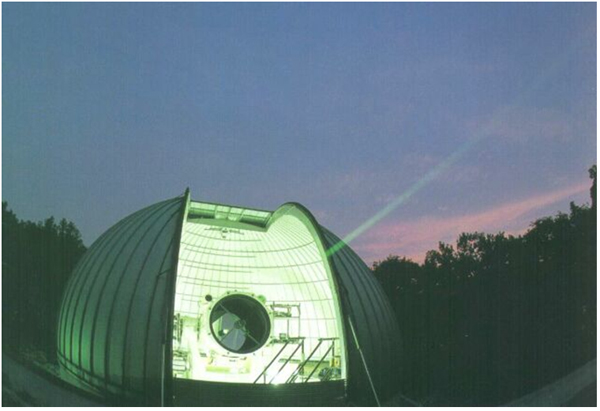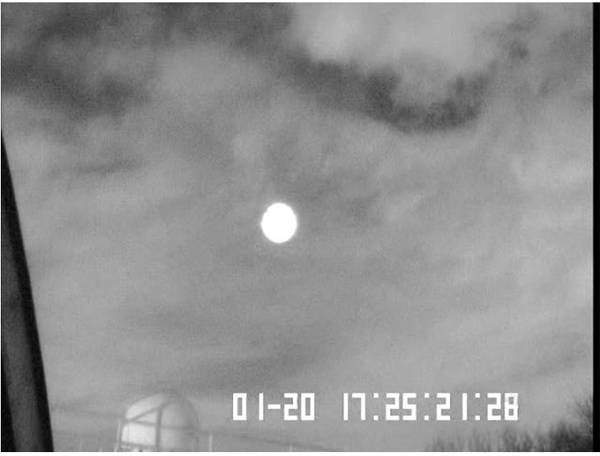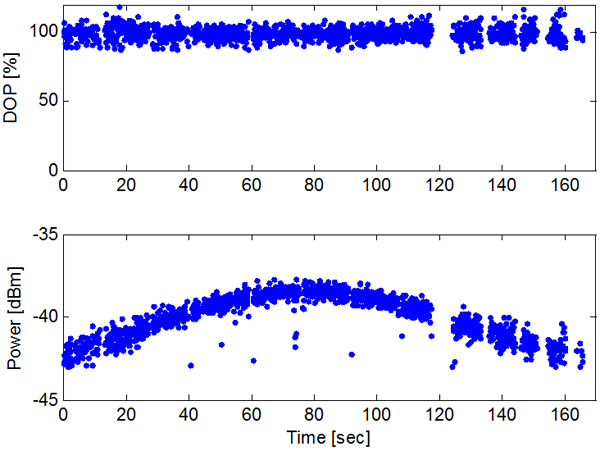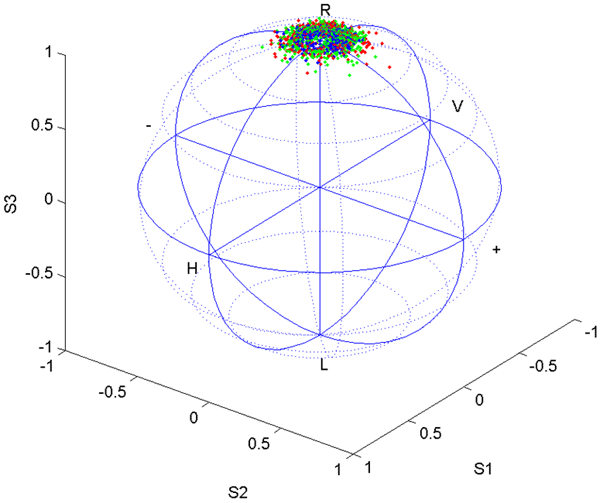Quantum Key Distribution (QKD)
QKD is a communication system in which two parties share a cryptographic key utilizing a quantum state (polarization for example) that is a physical nature of a particle of faint light (photon). This system is able to detect the presence of an eavesdropper as the quantum state is distorted if a third party is trying to measure the key for eavesdropping. Combined with the one-time pad that is the encryption method of one-time use of the key, QKD can provide communications with perfect secrecy.
URL of “Optics Express”, On-line Journal of Optical Society of America
http://www.opticsinfobase.org/oe/Issue.cfm
The title of the paper: “Polarization measurements through space-to-ground atmospheric propagation paths by using a highly polarized laser source in space”
Abstract:
http://www.opticsinfobase.org/oe/abstract.cfm?uri=oe-17-25-22333
PDF:
http://www.opticsinfobase.org/DirectPDFAccess/23221380-BDB9-137E-CE3EA24BB3405A31_190651.pdf?da=&id=190651&seq=0
Cryptography
The means of hiding information between two parties in order not to be eavesdropped by the third party.
Features of Quantum Cryptography Technology
Importance of info-communications security is rapidly increasing due to the coming of the network society by cloud computing and the growth of online administrative services (e-Government). Cryptography in widely use at present always have risks of decryption in case that computer technology may provide higher capability to decode. On the other hand, QKD has a distinguished feature that it is unable to be intercepted no matter how highly technology progresses in future. The experiment on QKD using optical fibers confirmed the transmission of over 200 km, however, it is said that 300km is the limit of QKD transmission due to inevitable transmission losses. Further technology for quantum data relay between cities and continents is awaited, however, it still remains unexplored. Expected as a possible near-future technology is QKD using a satellite around the earth; it will make possible the global QKD as well as higher security.
R&D on spacious optical communications and QKD
NICT has been conducting on R&D on space laser communications and QKD. Followings are the links about the related experiments NICT conducted so far:
Successful demonstration experiments on optical communications between the Optical Inter-Orbit Communications Engineering Test Satellite (OICETS) Kirari and NICT optical ground station on April 7, 2006
http://www3.nict.go.jp/w/w122/ogs/video_eng.html
Bidirectional Laser Transmission with a German Satellite on March 24, 2009
https://www2.nict.go.jp/pub/whatsnew/press/h21/090324/090324_e.html
Development of mobile free-space quantum cryptography terminal on September 15, 2008
http://spie.org/x27490.xml?highlight=x2414&ArticleID=x27490
NICT Optical Ground Station
The facility in NICT that is equipped with an optical telescope of 1.5m in diameter, where the world’s first experiment on optical communications between a geostationary earth orbit (GEO) satellite and the NICT optical ground station was successfully made using the Engineering Test Satellite VI (ETS-VI), Japanese name “KIKU No.6,” in 1994, and the laser communications experiment with a low-earth-orbit (LEO) satellite was succeeded in 2006. Laser ranging to measure the distance between a satellite and the station precisely is constantly conducted at NICT optical ground station.
Optical Inter-Orbit Communications Engineering Test Satellite (OICETS) “Kirari”
The Optical Inter-Orbit Communications Engineering Test Satellite (OICETS) was launched on August 24, 2005 by a Dnepr rocket from the Baikonur Cosmodrome and named "KIRARI", in order to conduct demonstrations with ARTEMIS, the latest geostationary satellite belonging to the European Space Agency (ESA). OICETS conducted optical inter-orbit communications tests with ARTEMIS at a distance of more than tens of thousands of kilometers apart. In 2006, the laser communication experiments between NICT optical ground station and OICETS were successfully conducted. Since 2008, the additional experiments were carried out with the new research objectives that NICT proposed the verification of the polarization characteristics and so on.
http://www.jaxa.jp/projects/sat/oicets/index_e.html


























